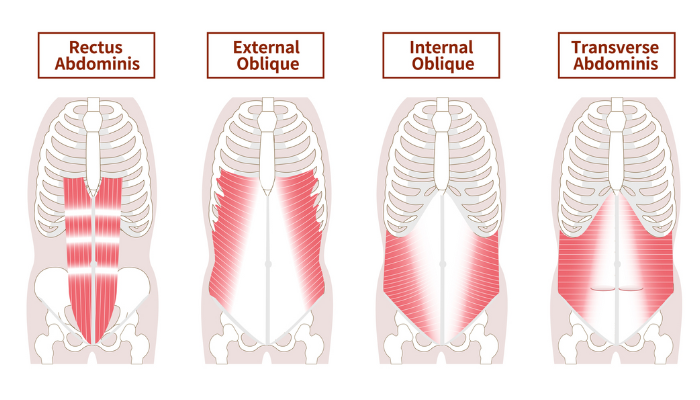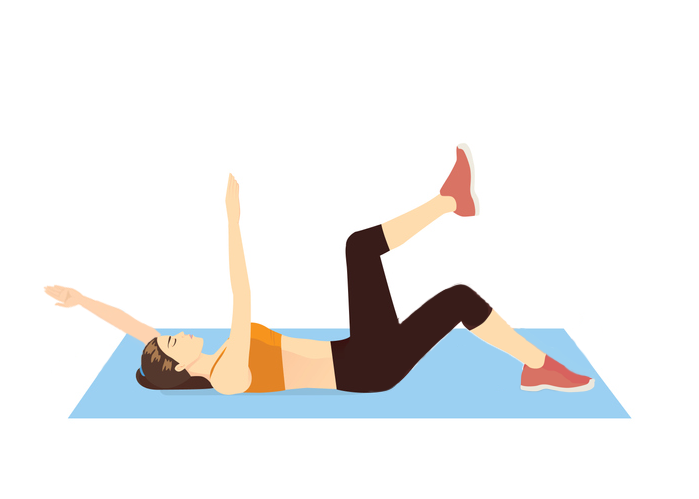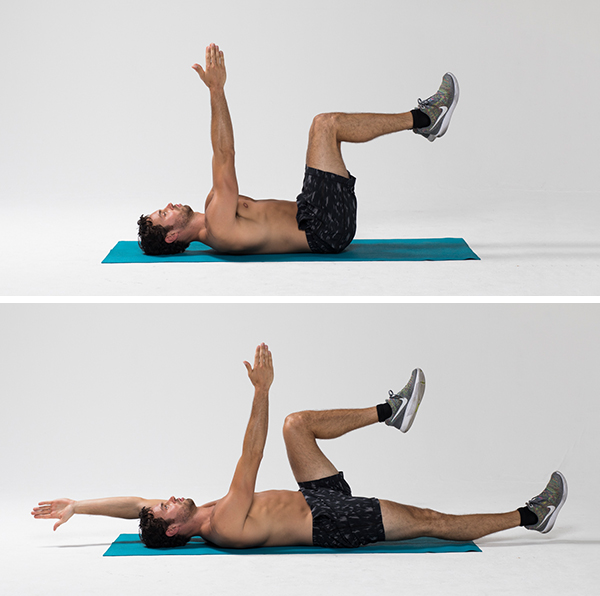Are You Engaging Your Core Correctly? Here’s How to Tell

You’ve heard the term bandied around at the gym, in yoga classes, or maybe even from your personal trainer: “engage your core.” But what does it really mean? Understanding how to engage your core helps not just with workouts but with your daily activities as well.
But before we delve deeper into the how, let’s clear up the what. Your core refers to a complex series of muscles; many are hidden beneath the exterior musculature people typically train.
Knowing how to correctly engage these muscles can have a profound impact on your strength, stability, and overall fitness.
What Does It Mean to Engage Your Core?
Engaging your core means tensing all the muscles of your midsection so they can stabilize your body, allowing you to carry out a range of movements.
During physical activity, it’s akin to providing a sturdy central link in your body, assisting with balance and stability. This is fundamentally different from simply flexing your abs, where you are just tensing your abdominal muscles.
Even though the abs are a significant part of the core, they constitute just one aspect of it, explains Theresa Marko, PT, DPT, MS, a board-certified orthopedic clinical specialist, owner of Marko Physical Therapy in New York City. She suggests that you think of your core “like a box in your midsection” with a front, back, top, bottom, and sides.
If your abs are only one side of that box, flexing them is engaging the muscles on only this side. To “engage your core” means to recruit all of the muscles in this box — but the transverse abdominis in particular. “The transverse abdominis is horizontal from the back to the front and can be thought of as a belt in that it helps stabilize our midsection,” explains Marko.
Core muscle anatomy
Your core isn’t made up of one single muscle. Instead, it consists of various muscles that function together to support your spine and allow you to move your body:

- Rectus abdominis: This muscle resides in the middle of your abdomen and is typically what people think of when they talk about abs. Marko explains that the rectus abdominis helps you flex or bend your torso, essentially working in a head-to-toe direction.
- Transverse abdominis: This muscle wraps around your body horizontally and helps stabilize your spine. Marko likens it to a hug for your inner organs. They’re also your deepest core muscles that “keep your pelvis and lower back stable,” adds Rachel Butler-Green, CSCS, founder of Fit Mindful Body Club.
- External abdominal oblique: These muscles sit on the side and front of your abdomen. Not only do they play a crucial role in stabilizing your core, but they also allow you to twist and side bend your trunk.
- Internal abdominal oblique: Lying just below the external oblique muscles (as you go deeper in your body, not down toward your legs), these muscles assist in many functions: stabilizing the core, flexing and bending the trunk, and even maintaining intra-abdominal pressure when you go to the bathroom.
Understanding this anatomy is key to implementing effective core engagement. By working in synergy, these muscles contribute to your overall strength, posture and balance during workouts and everyday tasks alike.
Tips for Engaging Your Core
Activating this section of your body down to the deep muscles of the core is a single movement. Here are some cues for proper core engagement, as recommended by Marko and Green.
Start with a quick cough
If you’re a bit unsure what it feels like to engage your core, Green suggests you “do a quick cough.” Even if you’ve only just started working out, your body knows how to engage your core and naturally does it when you cough.
When you cough, pay attention to your core. “The squeeze at the end of your cough is your core engagement,” Green explains.
Brace for a punch
When you cough, that core engagement is quick to happen and quick to release. But once you understand it, you can move on to replicating that engagement in a slower, more conscious way.
To engage your core, “squeeze your abs like you’re bracing for a punch in the stomach,” suggests Green. What you’re looking to do is “prevent it by tightening up,” says Marko.
Add your hand
“I also have people put their hands on their stomach to feel these muscles,” Marko explains. Feeling your ab muscles engage with your hand can also help train the movement until it becomes muscle memory.
Practice other core movements
Sometimes people don’t know how their muscles move during three basic core movements — pushing out, sucking in, and tightening. Marko suggests going through all three movements (with your hand on your stomach if it helps) to feel the difference in one session, which may help differentiate them.
How to Engage Your Core Step by Step

Now we can put all these techniques together for a five-step procedure on how to engage your core:
- Find a comfortable stance: Stand or sit upright. Ensure that your feet are shoulder-width apart and your spine is in a neutral position.
- Breathe appropriately: Exhale deeply, letting your belly deflate. Inhale slightly, allowing your abdomen to swell. This is a fundamental process, intended to get you familiar with the “feel” of your core.
- Take a deeper diaphragmatic breath: Make sure you’re taking in a “belly breath,” which forces your stomach to swell, instead of a shallow breath that causes your chest to rise.
- Pull your stomach to your spine as you exhale: As you let out your breath, imagine pulling your navel to your spine.
- Hold for a second: Maintain this engagement for at least a second before you relax.
If you find it difficult to maintain an engaged core, you can slowly add time to the final step each time you practice. Ideally, you should be able to take another breath without losing the engagement of your deep core muscles.
Benefits of Core Engagement
Engaging your core is about much more than a great ab picture (and we’re not ones to diminish how great a good ab picture can be). Exercise for those deep muscles of the core can be difficult and frustrating, even for regular exercisers.
But they are well worth the frustration and practice to perfect because of the positive ripple effects they can have on your athletic performance (whether it’s competitive or a sport you view as a hobby) and everyday movement.
Increases balance and strength
“The more engaged your core is, the more balance, strength, and power you’ll have while performing movement and exercise,” says Green. This is because your core muscles act as the center from which all other muscles in your body function.
By strengthening these, you’ll find that your whole-body strength and balance get a significant boost.
Boosts energy and power
A strong core is “where the center of your power comes from,” says Marko. She suggests picturing a golfer swinging a club to understand the connection. “You must have good stability and strength in your core to drive the ball far,” she explains.
Can help alleviate back pain
Learning how to engage your core can also help alleviate any aches in your lower back. One study pitted core training that included exercises for engaging and stabilizing these muscles against traditional resistance training and found core-specific training did a better job helping with lower back pain.
Promotes better posture
Finally, core engagement also plays a critical role in helping you stand taller and straighter in your day-to-day life. This is because the muscles involved can greatly influence your alignment, reducing the likelihood of slumping and promoting a more confident, healthier posture.
Exercises to Practice Core Engagement
Engaging your core takes time and practice. The list of exercises below get progressively harder, so try the easier ones first to focus on core engagement throughout the movement.
1. Supine 90-degree leg hold

Do not hold your breathe while doing this. Marko underscores that you must continue to gently breathe.
- Lie on your back with your feet lifted and knees bent so your legs and hips form a 90-degree angle (shins parallel to the floor and knees stacked above the hips).
- Place your hands on your stomach or on the floor by your sides.
- Brace for an imaginary punch to the stomach. This will activate the transverse abdominis
- Hold that for three to five seconds, then release.
- Repeat several times.
2. Marching in place

Marko considers this exercise the next step after supine 90-degree leg holds. This movement will build your ability to activate the transverse abdominis.
- Stand with your feet hip-width apart and your knees slightly bent.
- Engage your core and bring one knee toward your chest until your thigh is parallel with the floor.
- Hold your leg in this position for three to five seconds.
- Slowly lower this leg to the floor and repeat on the other leg.
- Repeat this process several times.
3. Alternating supine heel taps

Consider this the advanced version of supine 90-degree leg holds and a modified version of a dead bug.
- Lie on your back with your feet lifted and knees bent so your legs and hips form a 90-degree angle (shins parallel to the floor).
- Extend your arms toward the ceiling and engage your core.
- Keeping your knee bent, slowly lower one leg until your heel taps the floor. Simultaneously extend your opposite arm as far back as you can without your lower back lifting off the floor.
- Make sure your core stays engaged and your other leg stays in place in the air.
- Slowly return the lowered leg to its starting position.
- Repeat with the other leg and other arm.
- Cycle through each side 5 to 7 times.
4. Dead bug

While performing the this exercise, focus on keeping your lower back on the floor.
- Lie on your back and seal the space between your back and the floor by tilting your pelvis downward. Lift your feet from the floor and bend your knees so your legs form a 90-degree angle. Your knees should be stacked over your hips. Reach your arms straight up to the ceiling.
- Lower your left arm behind your head as you simultaneously extend your right leg long in front of you. Hover both your arm and your leg off the mat.
- Return back to the starting position. Alternate sides to complete all reps.
When Should You Engage Your Core?
Ideally, you should engage your core any time you move. “Your body is already smart, and your core should be engaging naturally when you move,” says Marko. That includes during exercise and everyday activities. However, factors such as lifestyle habits, weak muscles, or poor posture may hinder this automatic activation.
That’s where core exercises come in handy — they help train these muscles to engage properly, to ensure there’s a sufficient carryover into everyday life activities.
The benefits of engaging your core carry over to many everyday activities, even if you’re not conscious of it. Picking up and carrying groceries, playing with your dog or kids, sitting at your desk while maintaining proper posture — all of these are easier and less likely to cause injury when you engage your core.
Marko underscores that we should practice intentional control of our body, much like how we control our breath with breath-work. This conscious activation, coupled with the automatic one, works in tandem to strengthen our core and improve our overall physical health.
